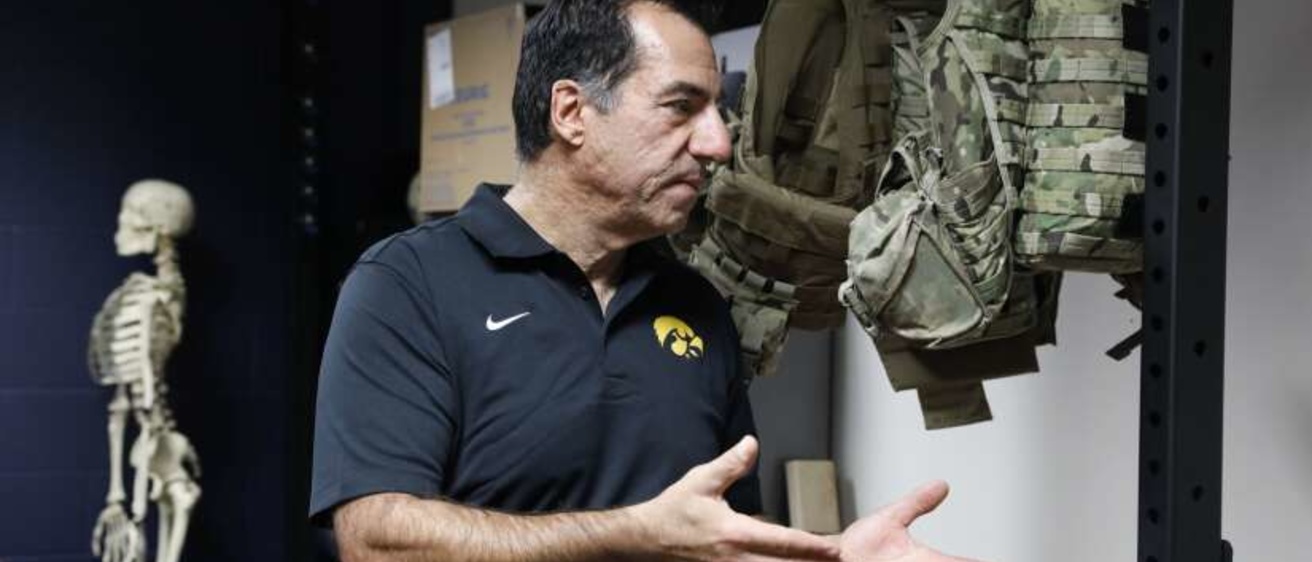Main navigation
The Virtual Soldier Research (VSR) program is a world-class research organization comprising a multi-disciplinary team of faculty, professional staff, and students.
Our expertise spans a variety of fields, including computer science, computer graphics, physiology, engineering, biomechanics, robotics, and optimization. VSR balances cutting-edge research with customer-driven product development in the field of digital human modeling (DHM). As an independent research group within the Iowa Technology Institute, VSR was established to develop new technologies in digital human modeling and simulation.
VSR has pushed forward the field of DHM by conducting novel research and creating new technology that predicts human posture, motion, and other functions in a high-fidelity, physics-based, three-dimensional, real-time environment. The inclusion of real-world constraints such as gravity, muscle fatigue, muscle strength, clothing restrictions, material properties, and physical restrictions in all of our models allows us to create the most realistic pre-production test environment. However, VSR's digital human model, Santos, is not just an independent software tool; it is a platform for growth, integration, and collaboration.
In addition, VSR has successfully secured long-term strategic partnerships with Department of Defense (DoD) agencies as well as private industries that work with us in our development and deployment of technologies designed to test products and manufacturing processes from a human-centric perspective. Our success has led to the spin-off of an innovative private company, Santos Human Inc., specifically focused on product development.
Who is Santos?
Santos is the virtual human who stands at the center of our digital human modeling and simulation research. Our high-fidelity, biomechanically accurate musculoskeletal model was developed from the inside out by our team of biomedical engineers, and incorporates 215 degrees of freedom, including the hand, feet, and eyes. The dimensions of the skeleton are mutable, able to represent any anthropometric cross section. In addition, Santos includes a muscular system with the ability to predict muscle activation and muscle forces in real time, using a novel optimization-based methodology.
Over time, the Santos family has grown to incorporate a variety of different body scans to provide a range of models that include our female version, Sophia, and a broad array of different body shapes, types, and sizes. Our research is currently being extended to allow multiple digital human models to interact with each other to complete tasks cooperatively.
Santos was built using state-of-the-art technologies adapted from robotics, Hollywood, and the game industry. Our research continues to grow in its dynamic capabilities, physiology, and intelligent behaviors through integration of Artificial Intelligence, design optimization, physics-based modeling, and advanced, multi-scale physiological models.
The mathematical model for the Santos skeleton was developed based on the Denavit-Hartenberg method for kinematic and dynamic analysis. Optimization is used to determine postures and motions that are governed by various human performance measures (objective functions) and constrained by the restrictions imposed by the skeleton, the laws of physics, and the environment. The software must be as fast and efficient as possible in an effort to provide real-time simulations.
VSR Mission
Our mission is to deliver high-fidelity, biomechanically accurate research to enable validated modeling and simulation of human activities to assist in biomedical engineering, ergonomic analysis, human performance analysis, human systems integration, and training.
VSR Vision
Our vision is to be the acknowledged world leader in digital human modeling and simulation.
